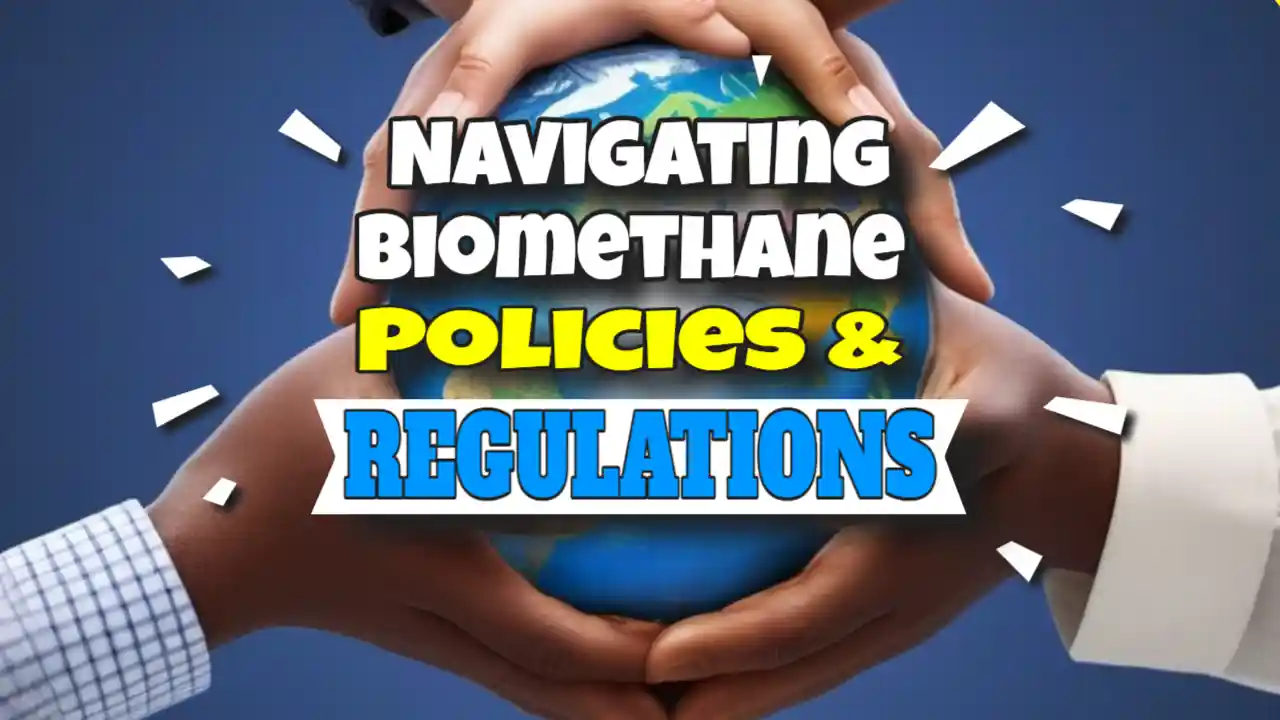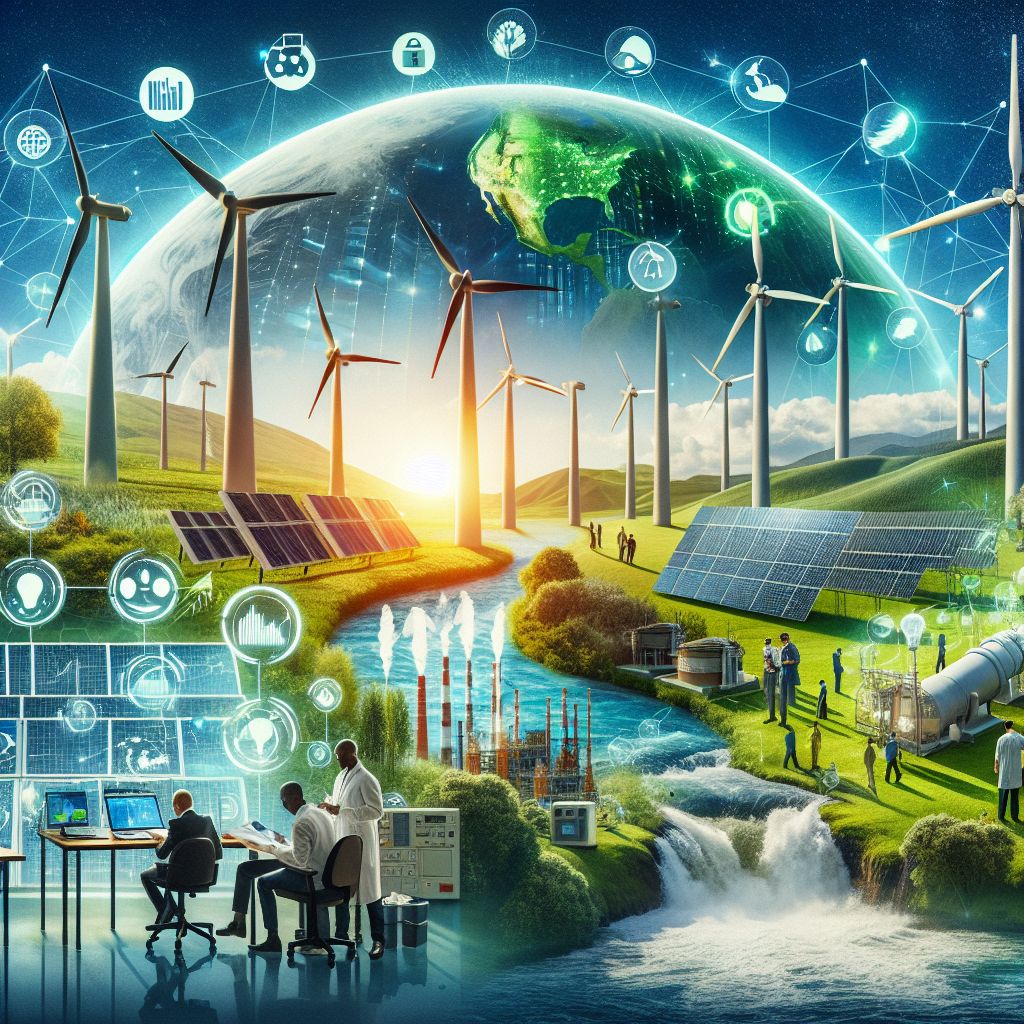Did you know that biomethane could play a pivotal role in reshaping our energy landscape, as long as entrepreneurs succeed in navigating policies and regulations set out by governments? As a renewable energy source derived from organic materials, it not only reduces greenhouse gas emissions but also supports a sustainable circular economy. Understanding its production processes is essential for all of us.
What You Will Learn
- Biomethane is a renewable alternative to fossil fuels derived from organic waste, significantly reducing carbon footprints.
- The production process of biomethane includes anaerobic digestion, biogas formation, and methane purification.
- Key technologies such as dry fermentation, wet fermentation, and co-digestion enhance the efficiency of biomethane production.
- Purification techniques are essential to meet quality standards for biomethane, allowing it to replace fossil fuels effectively.
- Methane recovery strategies improve overall production efficiency by capturing emissions that would otherwise escape into the atmosphere.
An Overview of Biomethane and Its Production Processes
Biomethane is a renewable energy source derived from organic materials. It plays a crucial role in reducing dependency on fossil fuels and lowering greenhouse gas emissions. Understanding biomethane and its production processes is essential for leveraging its benefits in the fight against climate change.
With increasing awareness of ecological issues, biomethane is gaining importance as a sustainable energy option. It not only contributes to energy security but also supports a circular economy by recycling waste materials. This makes it a vital component in both environmental and economic discussions.
Understanding Biomethane: Definition and Importance
Biomethane, often referred to as renewable natural gas, is primarily composed of methane, the same component found in conventional natural gas. It is generated through the breakdown of organic matter, such as agricultural residues, food waste, and manure. The importance of biomethane lies in its ability to provide a cleaner alternative to fossil fuels.
Incorporating biomethane into our energy systems can lead to significant environmental benefits. It helps in reducing carbon footprints, promoting sustainability, and supporting energy independence. This makes understanding biomethane a key element in today’s energy landscape.

The Production Journey: From Anaerobic Digestion to Biomethane
The journey of biomethane production begins with anaerobic digestion, wherein microorganisms break down organic material in the absence of oxygen. This process produces biogas, mainly composed of methane and carbon dioxide. The next step is to purify the biogas to separate the methane for use as biomethane.
Here’s a simple overview of the production process:
- Collection of organic waste materials
- Anaerobic digestion of these materials
- Production of biogas
- Purification of biogas to extract biomethane
Important Biomethane Policies and Regulations
There are a number of policies and regulations that govern biomethane production and use, including:
- Biomethane quality protocol: Producers and users of biomethane must comply with this protocol.
- Green Gas Support Scheme (GGSS): This scheme supports the deployment of new anaerobic digestion (AD) biomethane plants. The GGSS provides support to registered biomethane producers based on the volume of biomethane they inject into the gas grid.
- Non-Domestic Renewable Heat Incentive (RHI): The government uses this incentive to support biomethane production.
- Renewable Transport Fuel Obligation: This obligation rewards biomethane supplied to vehicles.
- Renewable Gas Guarantees of Origin (RGGOs): These guarantees issued by the GGCS contain information on the type of green gas produced, the feedstocks used, and sustainability criteria that have been met.
- Animal By-Products Regulations (ABPR): These regulations permit the treatment of low-risk animal by-products and catering waste in approved composting and biogas premises.
Biomethane Industrial Partnership (BIP): This partnership was launched by the European Commission to promote the sustainable production and use of biomethane.
Other Biomethane Regulations
Other biomethane regulations include:
- Rules of storage, pipeline, transport, or other infrastructure operators
- Fees payable for access to transmission and distribution networks
- Responsibilities for monitoring the quality of the biomethane to be injected in the grid
Key Technologies in Biomethane Production
Several technologies play a role in enhancing the efficiency of biomethane production. These include dry fermentation, wet fermentation, and co-digestion. Each method has its unique advantages, allowing for various types of organic waste to be processed.
For instance, dry fermentation is ideal for solid waste, while wet fermentation works well for liquid substrates. Co-digestion, on the other hand, involves combining different organic materials to boost biogas yield, illustrating the versatility of these technologies.
Purification Techniques for Enhanced Quality
To achieve high-quality biomethane, purification techniques are necessary. Upgrading biogas typically involves the removal of carbon dioxide and other impurities. Methods such as pressure swing adsorption, water washing, and membrane separation are commonly used for this purpose.
Each technique has its pros and cons, but the goal remains the same: to produce biomethane that meets stringent quality standards. This ensures that biomethane can effectively replace fossil fuels in various applications.
Methane Recovery: Enhancing Biomethane Production
Methane recovery is an essential aspect of increasing biomethane yield. It involves capturing and utilizing methane emissions that might otherwise escape into the atmosphere during production. By improving recovery techniques, we can significantly enhance the overall efficiency of biomethane production.
Strategies for effective methane recovery include:
- Implementing better sealing technologies
- Regular monitoring of methane emissions
- Utilizing advanced digestion processes
The Role of Biogas Plants in Biomethane Generation
Biogas plants serve as the backbone of biomethane production. They facilitate the entire process, from the collection of feedstock to the generation of biomethane. These plants are strategically important in managing waste and producing renewable energy.
Moreover, biogas plants can contribute to local economies by providing jobs and supporting sustainable practices. Their role in promoting biomethane production cannot be overstated, making them a key player in the renewable energy landscape.
Challenges and Considerations in Biomethane Adoption
While biomethane has immense potential, there are several challenges that hinder its widespread adoption. Many factors can complicate the production and utilization of biomethane, making it vital to address these barriers for a successful transition. Understanding these obstacles is key to developing effective solutions and ensuring a sustainable future.
One significant barrier is the high initial investment costs for setting up biogas plants and necessary infrastructure. These upfront costs can deter potential investors and stakeholders who may be uncertain about the long-term benefits. Additionally, securing financing and funding requires a solid business case that highlights the viability of biomethane projects.
- Regulatory uncertainties
- Public awareness and acceptance
- Integration with existing energy systems
Barriers to Widespread Implementation
Several barriers impact the adoption of biomethane on a larger scale. One major issue is the complexity of regulatory frameworks, which can vary significantly between regions. These regulations can create confusion and delay the development of biomethane projects, making it crucial for stakeholders to have a clear understanding of the legal landscape.
Another challenge is the need for public awareness and acceptance of biomethane. Many individuals may not fully understand the benefits or applications of biomethane, which can lead to resistance. Engaging communities and educating them about the positive impacts can foster greater support for biomethane initiatives.
- Lack of technical expertise
- Infrastructure limitations
- Market competition with fossil fuels
Policy Frameworks Supporting Biomethane Initiatives
Effective policy frameworks play a vital role in encouraging biomethane adoption. Governments can help create a favorable environment through incentives and subsidies for biogas production. These financial supports can significantly lower the barriers for new projects and increase investment in this sustainable energy source.
Moreover, implementing policies that promote research and development in biomethane technologies can enhance efficiency and lower costs. Such initiatives can lead to innovation in production methods and applications, making biomethane more accessible and appealing to a wider audience.
- Tax credits for biogas producers
- Renewable energy standards
- Grants for community-based projects
Waste-to-Energy: Addressing Challenges in Urban Waste Management
The concept of waste-to-energy plays a crucial role in overcoming several challenges in urban waste management. By converting organic waste into biomethane, cities can not only reduce landfill use but also generate renewable energy. This approach creates a circular economy where waste materials are repurposed, ensuring a more sustainable process.
However, integrating waste-to-energy systems into existing urban infrastructures presents challenges. Cities must address logistical issues, such as collection and transportation of organic waste, along with establishing efficient processing facilities. Collaboration between local governments, waste management companies, and energy producers is essential to create functional waste-to-energy solutions.
- Improving waste segregation systems
- Investing in processing technologies
- Enhancing public participation in recycling and composting
Biomethane Production Process Flow
Key Technologies in Biomethane Production:
- Dry Fermentation
- Wet Fermentation
- Co-Digestion
You Also May Like to Read Our Other Biomethane Articles Such as:
FAQs about Biomethane
What is biomethane?
Biomethane is a renewable natural gas primarily composed of methane, generated from the breakdown of organic materials like agricultural residues, food waste, and manure. It serves as a cleaner alternative to fossil fuels.
How is biomethane produced?
Biomethane is produced through a process that starts with anaerobic digestion, where microorganisms break down organic matter without oxygen, resulting in biogas. The biogas is then purified to extract biomethane.
What are the main technologies used in biomethane production?
Key technologies include dry fermentation, wet fermentation, and co-digestion, which enhance the efficiency of biomethane production by processing different types of organic waste.
What are the challenges to biomethane adoption?
Challenges include high initial investment costs, regulatory uncertainties, lack of public awareness, and competition with fossil fuels. Addressing these barriers is crucial for the widespread adoption of biomethane.
How do biogas plants contribute to the biomethane production process?
Biogas plants collect feedstock, facilitate anaerobic digestion, and generate biomethane. They are essential for managing waste and producing renewable energy, contributing to local economies.





Leave a Reply